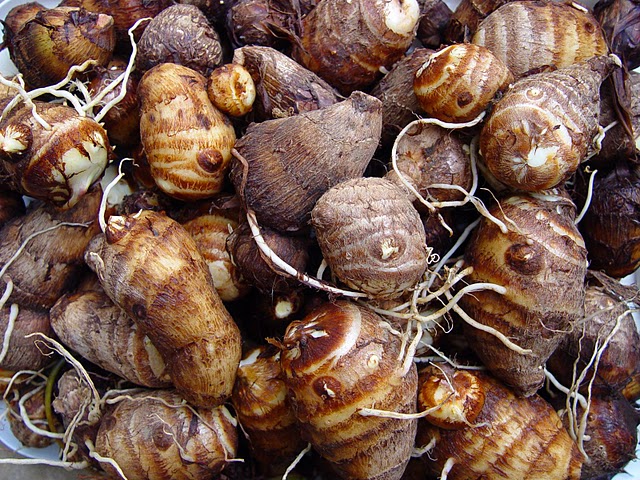Makhlouf Himeda, Nicolas Njintang Yanou, Richard Marcel Nguimbou, Claire Gaiani, Joel Scher, J. Balaam Facho, Carl M. F. Mbofung
ENSAI, University of Ngaoundere, P.O. Box 455, Ngaoundere, Cameroon
Corresponding author email njintang@yahoo.fr; Department of Biological Sciences, Faculty of Sciences, University of Ngaoundere, P.O. Box 454, Ngaoundere, Cameroon
Laboratoire d’Ingénierie de Biomolécules, ENSAIA-INPL. 2, avenue de la Forêt de Haye, B.P. 172, 54500 Vandoeuvre-lès-Nancy, France
Faculté des Sciences Exactes et Appliquées, Université de N’djamena, B. P. 1027 N’djamena, Tchad
Key words: Taro corms, starch, maturity stage, physicochemical properties, thermal properties.
 Abstract
Abstract
The objective of this study was to evaluate the effects of tubers maturity stage on the physicochemical characteristics and thermal properties of Colocasia esculenta (Sosso ecotype) starches. Plantation was done in Chad, tropical area from May to February following a randomized design with 5 maturity stages (6, 7, 8, 9 and 10 months after planting) as the main treatments. The results showed significant increase in phosphorus content (from 113.99 to 145.64μg/100g), temperature (from 80.69 to 84.54°C) and enthalpy of gelatinization (from 13.24 to 16.27 J/g), water absorption capacity (from 140.11 to 304.48 %), solubility index (from 17.50 to 29.42%) and swelling index (from 115 to 135%). In addition the monomolecular moisture content (varying from 2.67 to 3.36 %) and the GAB constant C (varying from 11.73 to 113.22) exhibited significant increase with maturity. Furthermore, a significant decrease in amylose content (from 35.90 to 27.65%) was observed as the maturity increases. In conclusion and on the basis of the correlation observed, the changes in phosphorus and amylose composition of starch during growth seemed to play a role not only on the molecular structure of the starch granules, but also on its functionality.
Get the original articles in Source: Volume 2, Number 3, March 2012 – IJB
Published By: International Journal of Biosciences (IJB)
Related Post: Infectious potential of Plasmodium falciparum in the Commune of Aguegues in Benin
